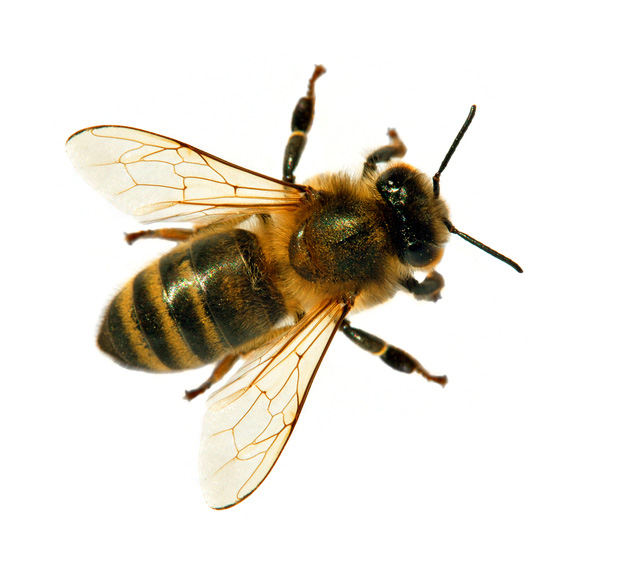Bees & Wasps
The last thing you want is to have a dangerous colony of stinging insects formed in your home or business. If you notice a nest on your property, the pest control experts at Burns Pest Elimination are here to provide you with quality tips and services that will keep you safe. Read on for more information on stinging insects.
Types of Stinging Insects in Arizona
Stinging insects are a very commonly found pest, particularly in southwestern states where the climate remains warm year-round. More than 500,000 people are sent to the emergency room every year from insect stings, and they can have a very high potency if an allergic reaction occurs. Among the many stinging insects, Arizona has a large population of:
- Africanized bees
- Bumble bees
- Carpenter bees
- Honey bees
- Wasps
- Yellowjackets
Most stinging insects do not want human interaction; however, they will often resort to stinging if they perceive danger to themselves or their colony. When this happens, stinging insects will often swarm their perceived attacker en masse, and with colonies containing thousands of members, this can be very dangerous.
How to Identify Stinging Insects
While there are many different types of stinging insects, there are similar characteristics they all share:
- Size – In general, stinging insects are not very large. The smaller Africanized bees are around 19mm, while wasps can get up to 2 inches long.
- Color – The color of each stinging insect depends on their species, but common coloring for bees and wasps includes yellow, brown, reddish-orange, and black.
- Stinger – Stinging insects use their stingers primarily for reproductive purposes, hunting, and self-defense. Bees typically have a barbed stinger that comes out of their body when they sting, causing them to die. Wasps have a smooth stinger, which allows them to sting multiple times without losing it.
- Diet – Stinging insects feed on nectar and other sugar-rich foods, such as fruit. Some species of wasps also feed on other insects.
- Nest – Both beehives and wasp nests are fairly recognizable from the outside. They are usually white in color paper-like, composed of pulp made of chewed-up wax or wood fibers. They can be found hanging in protected areas such as the edges of roofs, in sheds, under thick tree branches, and along playground structures. Some wasp species burrow underground to build a complex nesting system.
How to Prevent Stinging Insects in Arizona
To prevent stinging insects from nesting near your home or business, you will want to take steps to eliminate things that attract them. Both bees and wasps are attracted to sweet things, whether it is food, drinks, hummingbird feed, or sweet-scented trash. You will want to make sure that all outdoor trash cans are properly secured to keep the smells in and the stinging insects out, and make sure that no food or loose trash gets left outside for long periods of time.
Flower gardens are always a popular spot for stinging insects to congregate, so moving them away from your building and high-traffic areas will keep them from nesting nearby. Filling holes and cracks on the outside of your building reduces popular spots where bees and wasps begin forming their nests, and keeping your yard tidy and free of debris or equipment also cuts down on safe places for these insects to call home.
Call the Insect Control Experts in Arizona & Las Vegas
Due to the defensive nature of stinging insects, it is best to leave the removal of bee or wasp nests to the experts. Your safety is our top priority, and at Burns Pest Elimination, our team of pest control experts has years of experience and the proper equipment to efficiently handle your pest infestation at an affordable rate you’ll love. Don’t get swarmed by a stinging insect outbreak—if you live in Phoenix, Tucson, or Las Vegas, give us a call or request a quote online today!
We provide bee removal and wasp nest removal in the following cities:
- Bee Removal & Wasp Nest Removal in Peoria, AZ
- Bee Removal & Wasp Nest Removal in Chandler, AZ
- Bee Removal & Wasp Nest Removal in Gilbert, AZ
- Bee Removal & Wasp Nest Removal in Glendale, AZ
- Bee Removal & Wasp Nest Removal in Mesa, AZ
- Bee Removal & Wasp Nest Removal in Phoenix, AZ
- Bee Removal & Wasp Nest Removal in Scottsdale, AZ
- Bee Removal & Wasp Nest Removal in Surprise, AZ
- Bee Removal & Wasp Nest Removal in Tempe, AZ
- Bee Removal & Wasp Nest Removal in Tucson, AZ
- Bee Removal & Wasp Nest Removal in Las Vegas, NV


